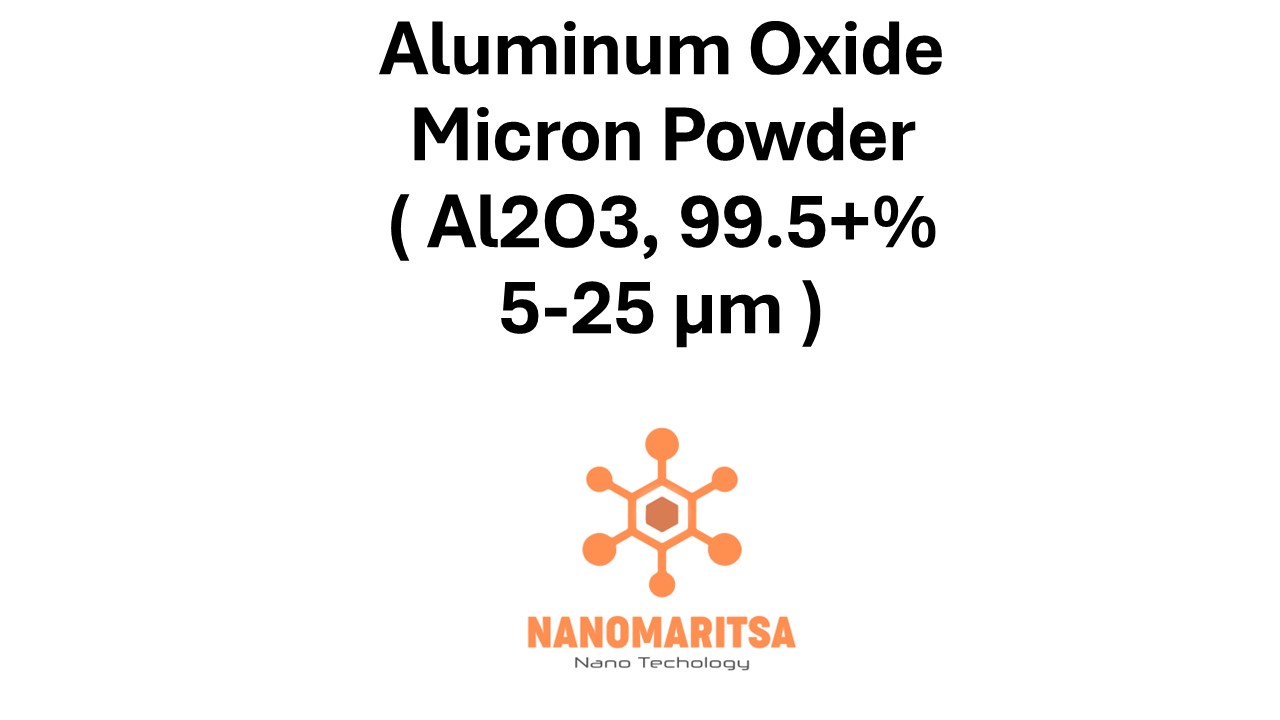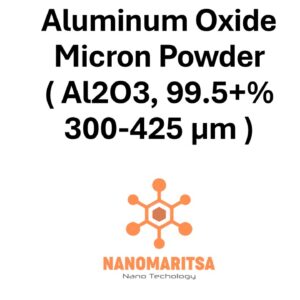Aluminum Oxide Micron Powder (Al₂O₃, 99.5+%, 5–25 µm) is a high-purity alumina powder renowned for its outstanding hardness, thermal stability, and chemical resistance. Commonly referred to simply as alumina, this oxide ceramic is one of the most widely used engineering materials worldwide. With particle sizes ranging from approximately 5 to 25 micrometers, this powder strikes a practical balance between surface area and flow characteristics—attributes that are vital for consistency and performance in processes such as advanced ceramics, polishing, thermal coatings, and electronics manufacturing.
1. Key Properties
- High Purity (≥99.5%)
Low impurity levels preserve alumina’s mechanical and chemical integrity. In high-performance applications, purity ensures consistent results, particularly in ceramics, substrates, and specialized coatings. - Particle Size (5–25 µm)
The controlled size range favors good packing density, efficient sintering, and straightforward mixing—beneficial for ceramic part fabrication, polishing compounds, and thermal spray formulations. - Extreme Hardness
Alumina’s hardness (close to 9 on the Mohs scale) makes it a top choice for wear-resistant components, grinding media, and abrasives, delivering long component lifespans. - Thermal & Chemical Stability
A melting point exceeding 2,000 °C and high chemical inertness allow alumina to withstand harsh or corrosive environments—ideal for furnace linings, refractory parts, and chemical handling systems. - Electrical Insulation
Alumina’s excellent dielectric strength and low electrical conductivity enable its broad use in electronic substrates, sensor housings, and other components needing reliable insulation at elevated temperatures.
2. Applications
- Advanced Ceramics & Refractories
This alumina powder is sintered to create dense, wear- and temperature-resistant parts—such as seals, bearings, and kiln furniture—vital in high-temperature industrial processes. - Abrasives & Polishing
Owing to its hardness, alumina powder is extensively used in grinding wheels, lapping compounds, and polishing slurries for metals, optics, and semiconductor wafers. - Thermal Barrier Coatings
In aerospace and power generation, alumina-based thermal barrier coatings protect engine parts from oxidation and high-temperature degradation, extending component life. - Electronics & Electrical Insulation
Alumina’s stable insulating properties and thermal conductivity (when dense) support the fabrication of circuit substrates, semiconductor packages, and high-voltage insulators. - Catalysts & Filtration
High-purity alumina can serve as a catalyst support or as part of filtration membranes in chemical processing, benefiting from the material’s chemical inertness and thermal resilience.
3. Advantages
- Enhanced Sinterability
A 5–25 µm size range fosters uniform packing, reducing voids and promoting consistent microstructures in ceramic parts with higher mechanical strength and reliability. - Excellent Wear Resistance
The inherent hardness of alumina yields durable tooling, abrasives, and coatings capable of resisting abrasion, erosion, and impact in demanding environments. - High Temperature Performance
Alumina remains dimensionally stable under extreme heat, a necessity for industrial furnaces, foundry operations, and engine components subject to prolonged thermal stress. - Corrosion & Chemical Resistance
By resisting acids, alkalis, and most solvents, alumina extends component lifespans in petrochemical, pharmaceutical, or food-processing sectors. - Electrical & Thermal Management
Low electrical conductivity plus decent thermal conductivity in dense forms make alumina suitable for critical electronic parts and heat-dissipating components.
4. Recent Trends and Research
- Ceramic 3D Printing
Progress in additive manufacturing has prompted researchers to adapt alumina powders for binder jetting, stereolithography, and laser-based methods, enabling complex, near-net-shape ceramic parts. - Nano & Hybrid Alumina
Combining micron-sized alumina with nano-scale additives can improve fracture toughness, reduce sintering temperatures, and fine-tune thermal expansion properties for specialized uses. - Advanced Coating Processes
Techniques like plasma spraying and high-velocity oxygen fuel (HVOF) are being refined to deposit alumina layers with better adhesion, uniformity, and resistance to spalling at high temperatures. - Electronics & Sensor Development
Alumina’s role in microelectronics—particularly in power devices, LEDs, and high-temperature sensors—continues to expand as demands for thermal stability and miniaturization grow. - Sustainability & Recycling
Recycling alumina-based abrasives and reclaimed ceramic scrap is gaining attention, aiming to reduce raw material costs and environmental impact in manufacturing.
5. Future Prospects
- Advanced Ceramic Manufacturing
Enhancements in powder preparation, additive manufacturing, and sintering strategies will likely yield even more complex alumina components with higher performance at lower costs. - Higher-Performance Electronics
As power density and temperature requirements rise in next-generation electronics, alumina’s insulating and thermal conduction capabilities will remain crucial. - Medical & Bioceramic Applications
Alumina’s chemical inertness and wear resistance support its use in orthopedic implants, dental crowns, and medical instruments, with ongoing developments focusing on improved biocompatibility and toughness. - Lightweight Structural Composites
Alumina can reinforce lightweight materials—like aluminum or polymer matrices—enhancing stiffness, abrasion resistance, and temperature stability, critical in the automotive and aerospace industries. - Clean Energy Systems
Fuel cells, battery separators, and solar thermal plants can benefit from alumina’s resilience to chemicals and high temperatures, aligning with broader global sustainability efforts.
With 99.5+% purity, a 5–25 µm particle size range, and outstanding mechanical and thermal properties, Aluminum Oxide Micron Powder (Al₂O₃, 99.5+%, 5–25 µm) is a proven workhorse material across numerous technical fields. Its ability to combine extreme hardness, high-temperature endurance, and chemical stability makes alumina indispensable for applications demanding durability, precision, and reliability.
| Measurement (gr) | 100 grams, 500 grams, 1000 grams |
|---|






